This set of views will give you the opportunity to see the advantages
of antenna stacking. In order to keep the patterns clean, I have
chosen to view only two of the antennas. My C-51XR at 102' is basically
a C-31XR (14 elements on 20, 15, & 10) and an EF-240 (2 elements on
40), so for my design I am using two C-31XR antennas to minimize the confusion.
For those of you already thinking about a potential phasing problem, yes
there is, and I will address it in another set of views.
The set of views include:
Here are the views of a single C-31XR at 102':
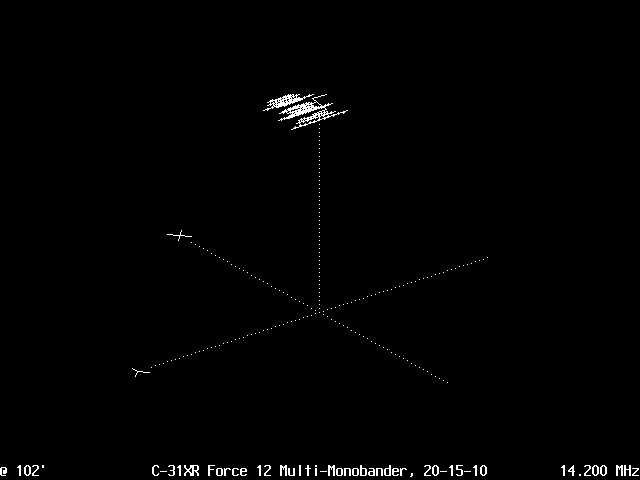
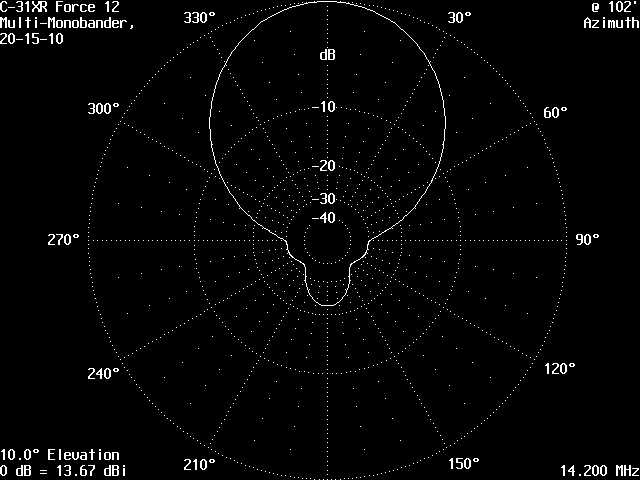
-
Figure 2 (Single C-31XR Azimuth Pattern)
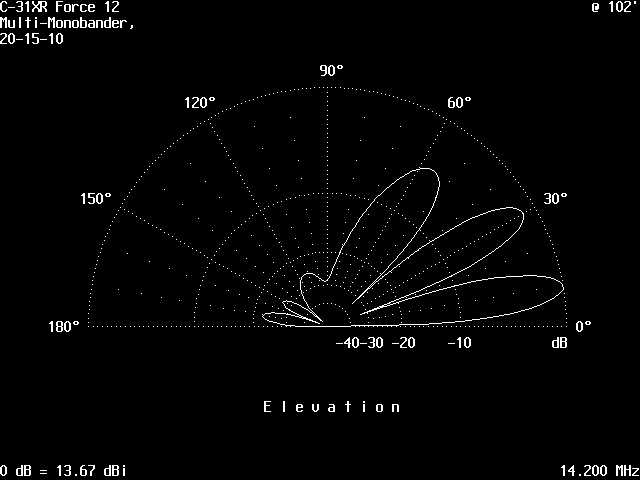
-
Figure 3 (Single C-31XR Elevation Pattern)
-
Note the 3 Large Lobes
-
MAX Gain at 13.67 dBi
Here are the views of a stacked pair of C-31XR antennas:
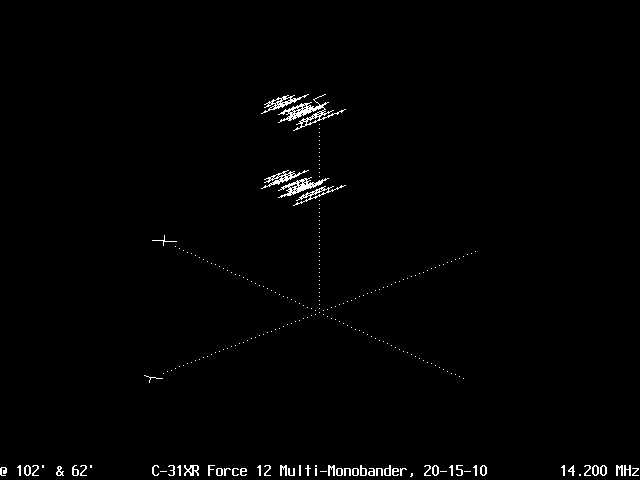
-
Figure 4 (Stacked C-31XR Antennas)
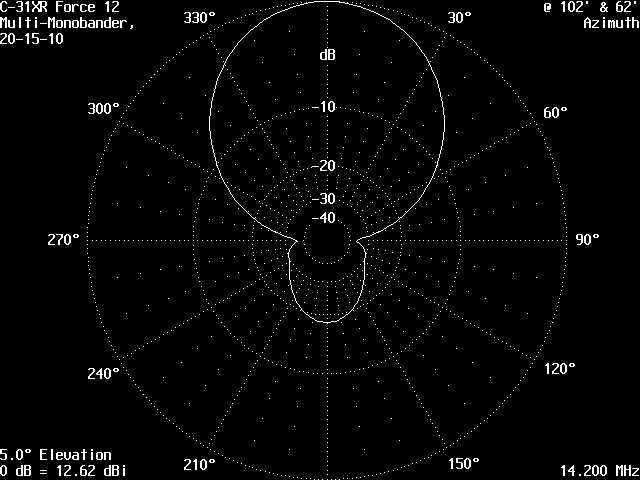
-
Figure 5 (Stacked C-31XR Azimuth Pattern)
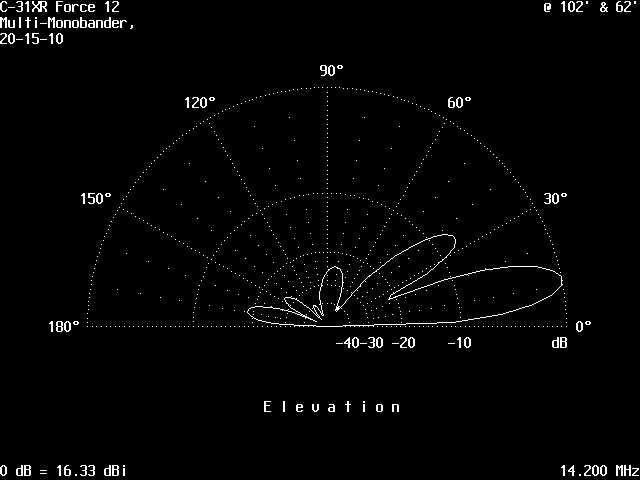
-
Figure 6 (Stacked C-31XR Elevation Pattern)
-
Note Only 1 Large Lobe
-
MAX Gain at 16.33 dBi (+3 dB)
Here are the views of a stacked pair of C-31XR antennas at 90°:
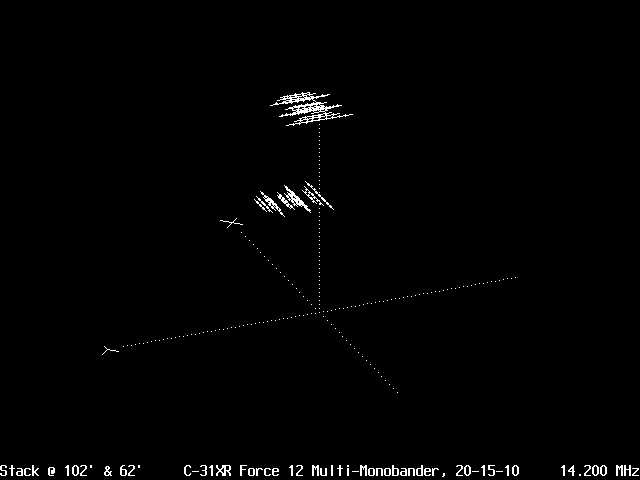
-
Figure 7 (Stacked C-31XR Antennas at 90°)
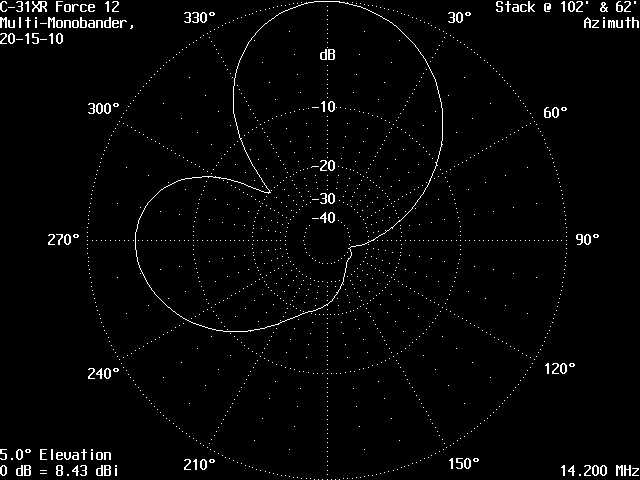
-
Figure 8 (Stacked C-31XR at 90° Azimuth
Pattern)
-
Note the Two Main Azimuth Lobes
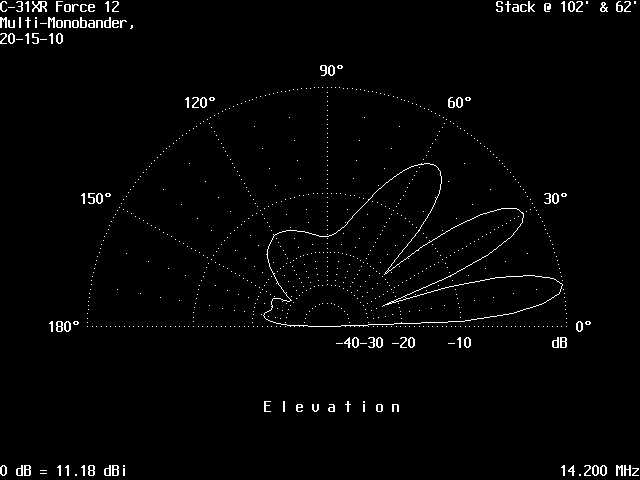
-
Figure 8 (Stacked C-31XR at 90° Azimuth
Pattern)
-
Note This Elevation Pattern is One Axis
top || back
|| WN9O home
|